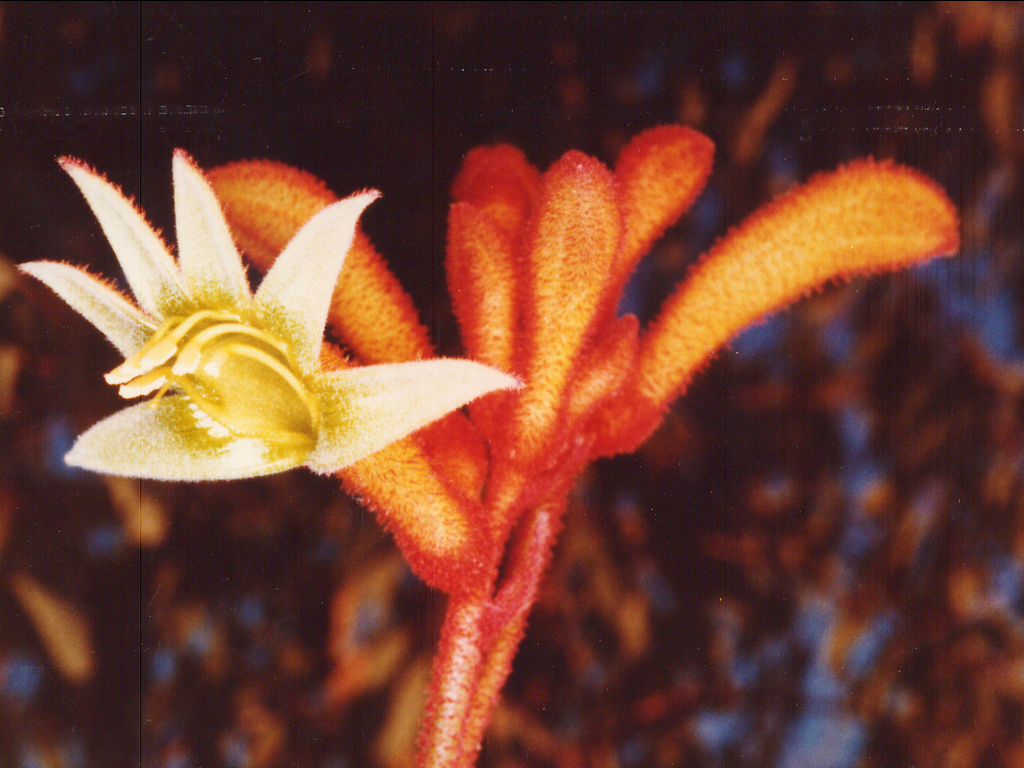Anigozanthos 'Copper Charm'
- File Number
- 304
- ACRA Field Book Number
- 22
- Registration Date
- 15/10/1992
- Application Received
- 01/01/1983
- Family
- Haemodoraceae
- Cultivar Name
- Anigozanthos 'Copper Charm'
- Origin
- Anigozanthos'Copper Charm' is a manipulated hybrid plant developed from A. preissii (female) and A. flavidus (male). It was first cultivated in 1973. The name refers to the flower colour. The cultivar was first received by the Authority in 1983. Registration applied for by Mr K Oliver, Parkwood, Western Australia.
- Characteristics
- This cultivar has glossy green leaves to 40cm long. The flowers stems are up to 1.7m tall, flowers are orange in colour and the anthers are cream. The flowers are mainly found from September to November in Western Australia. Diagnosis: A. flavidus: 2m tall; flowers from October to February; leaves are glabrous; flower stems are branched, flowers are tubular, 3-4cm long, densely hairy and the lobes are not turned back. The flowers are found in yellow-green, red and pink. Anigozanthos 'Copper Charm' :1.7m tall; flowers from September to November; leaves are glossy green; flower stems are branched, flowers are tubular, ca 50mm long and orange in colour. A. preissii: 0.6m tall; flowers from August to November; leaves are sparse and nearly terete, deciduous; flowers are tubular, ca 56mm long, covered in wooly hairs, lobes not reflexed, orange to yellow red in colour. This cultivar is similar to Anigozanthos 'Regal Claw', which has orange backs to the anthers.
- Cultivation
- The cultivar grows best in an open, sunny position. Good drainage is required, and it responds well to watering. Requires some frost protection.
- Publication
- Wrigley, J.W. & Fagg, M. (1988), Australian Native Plants: propagation, cultivation and use in landscaping Edn. 3: 109
- Colour Coding
- RHS Colour Chart 1966 hairs on perianth tube: Red Group 44A inside perianth tube: Yellow-Green Group 145A; filaments: Yellow-Green Group 149Banthers: Greyed-Yellow 162AThe tube is covered in red and yellow hairs.
- Propagation
- Division or tissue culture
- Applicant Name
- K. R. Oliver
- Uses
- As part of a mass planting or mixed in a shrubbery, or as a spectacular feature plant. Attracts nectar feeding birds.
- Availability
- Unknown
- ANBG Accession Numbers
- ACC304, ACRA022, CBG8312961
- NSL ID
- -

